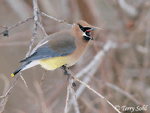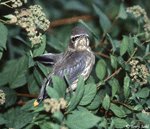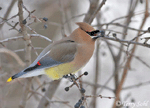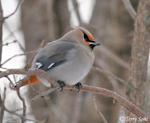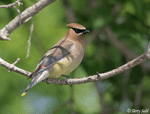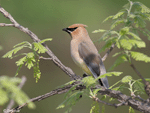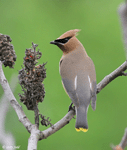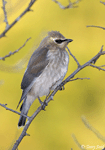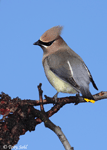|
Cedar Waxwing |
|
Bohemian Waxwing |
|
Bombycilla cedrorum |
|
Bombycilla garrulus |

|
|
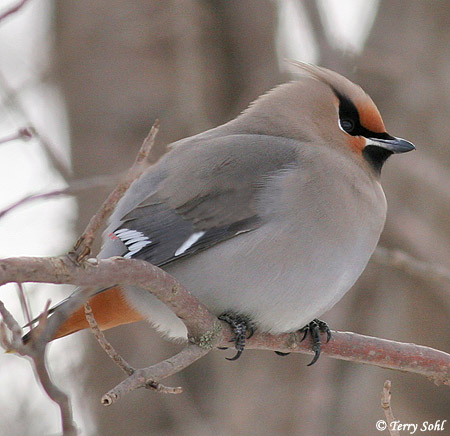
|
|
Cedar and Bohemian Waxwings are fairly easy to distinguish if a good view of the
bird is available. Structurally, the two species are very similar,
but plumage differences are distinctive. In South Dakota, the Cedar
Waxwing is by far the most common of the two species, with Bohemian Waxwings
only found in the winter. It's worth scanning any flock of Cedar Waxwings
in the winter to see if any Bohemian's are present. If they are seen side
by side, differences in the two species are generally quite apparent. |
|
Length: 7.25 inches |
|
Length: 8.25 inches |
|
Wingspan: 12 inches |
Wingspan: 14.5 inches |
|
Body: Warmer, brownish upperparts, head, and breast |
Body: Grayish upperparts |
|
Belly: Pale yellowish belly |
Belly: Gray belly |
|
Undertail Coverts: White undertail coverts |
Undertail Coverts: Chestnut undertail coverts |
|
Wings: Lack white or yellowish spots |
Wings: White tips on wing feathers, yellow on primaries |
|
South Dakota Status: Common year-round bird throughout South
Dakota, although nomadic and sporadic at any one spot. |
South Dakota Status: Irregular winter visitor to South Dakota,
most common in the Black Hills and the West. |
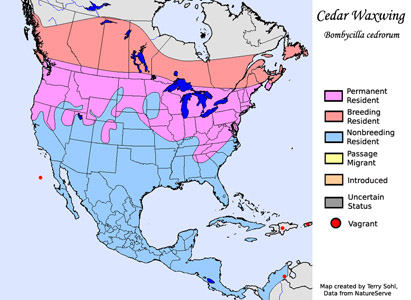 |
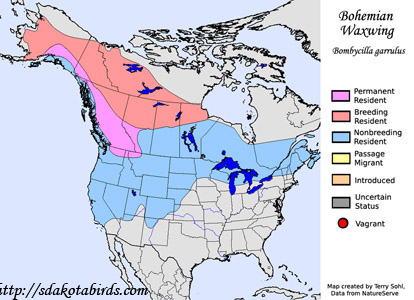 |


